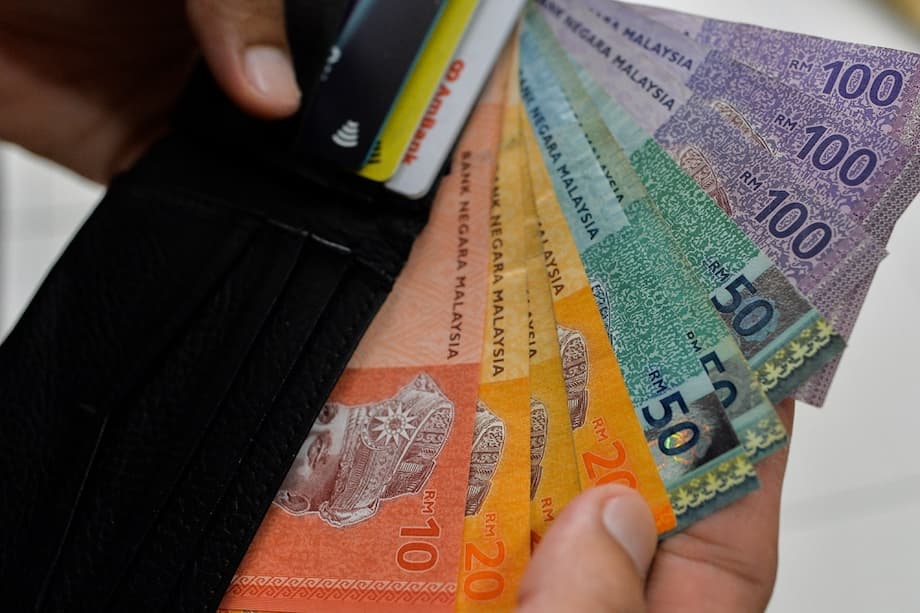Why the reform push gathered pace
Malaysias Madani administration was elected on promises to clean up public finances, lift incomes, and build a fairer economy. The pressure to act is real. Tax revenue amounted to roughly 12.4 percent of GDP in 2024, among the lowest shares in the region. At the same time, debt sits around RM1.3 trillion and interest payments reached RM54.7 billion, a sum larger than the Health Ministry budget. With that backdrop, the government has set out to raise revenue in a measured way, target subsidies to those who need them, and redirect spending toward areas that support growth and social protection.
- Why the reform push gathered pace
- What the expanded SST really means
- Subsidy rationalisation, what changes for drivers, households and firms
- New taxes on dividends, global firms and carbon
- Wages, jobs and social protection
- Guardrails for public money
- Growth and prices in 2025
- External risks and buffers
- The Essentials
Budget 2025 is the most ambitious expression of that plan so far. It totals RM421 billion, with RM335 billion for operating expenses and RM86 billion for development projects. The aim is to lift revenue to around RM340 billion, bring the fiscal deficit to 3.8 percent of GDP in 2025, and move toward 3 percent in the medium term. These targets are backed by new fiscal rules under the Public Finance and Fiscal Responsibility Act, and overseen by the Fiscal Policy Committee chaired by the Prime Minister. The committees August 2025 review reiterated the dual focus on stability and growth as Malaysia enters the 13th Malaysia Plan period.
Officials emphasize that fiscal reform is not austerity. The goal is to rebalance who contributes and who benefits, widen the base so more of the economy is captured by the tax system without burdening the vulnerable, and prioritize spending with the greatest public impact. That is why blanket subsidies are being narrowed, while cash aid and services for lower and middle income households expand. It is also why the Sales and Service Tax is being broadened to include more discretionary spending and more of the digital economy, while keeping essentials exempt.
What the expanded SST really means
Malaysias Sales and Service Tax is a single stage system. Sales tax is collected once at the point of manufacture or import, while service tax is levied on certain services. It differs from a value added tax that applies at every stage of production. Because it is a consumption tax, critics call it regressive. Policymakers answer that Malaysias design limits that effect by exempting daily essentials and targeting discretionary items and services, so heavier spenders contribute more.
For 2025, the scope expands to include more commercial services, some non essential goods, premium imports, and a tighter net over digital services. The authorities are also strengthening compliance by foreign providers of digital services, so revenues from the fast growing online economy are captured. The threshold for small businesses remains relatively high so micro enterprises are not pulled into complex paperwork, and the sales tax still occurs at the manufacturer or importer level rather than every step along the supply chain.
Why GST stays on hold
The government has avoided reviving the goods and services tax for now. Prime Minister Anwar Ibrahim has acknowledged that GST can be an efficient collection tool, but argues it should only return when incomes are higher and the safety net is stronger. External observers, including regional fiscal monitors, often note that GST would deliver a broader, more durable base. Malaysias choice is to first exhaust options to widen SST coverage, improve enforcement, plug leakages through e invoicing, and ask the highest spenders and profit makers to contribute more. The political calculation is clear: a smoother path that protects purchasing power while building trust in how public money is used.
Subsidy rationalisation, what changes for drivers, households and firms
Malaysias subsidy bill surged in recent years as global prices spiked. In June 2024 the government removed blanket diesel subsidies, lifting the pump price from RM2.15 to RM3.35. The move reduced smuggling and trimmed fuel outlays that had ballooned. The next step, planned for 2025, is to retarget RON95 petrol subsidies away from the top 15 percent of income earners. Most households will continue to receive support directly or through maintained price controls. The government is taking a phased approach and will lean on cash assistance to cushion the transition.
International institutions have endorsed this track. In December 2024, the IMF completed its regular review with Malaysian authorities, praising the shift from universal subsidies to targeted support and the passage of Malaysias new fiscal framework. IMF mission chief Masahiro Nozaki said the reforms lay groundwork for an inclusive and resilient economy and urged steady progress on the agenda.
“The IMF welcomes Malaysias economic reforms, including the passage of the Public Finance and Fiscal Responsibility Act and successful electricity and diesel subsidy reforms, and encourages further acceleration of reforms for an inclusive and resilient economy.”
Targeted aid has expanded in parallel. Sumbangan Tunai Rahmah and the monthly SARA programme reach millions of households. A one off RM100 Penghargaan Sara payment costing RM2.2 billion symbolised early gains from fiscal consolidation. Total cash aid in 2024 exceeded RM15 billion. This strategy channels support to those who need it most, while freeing funds for health, education, and infrastructure that benefit the wider economy.
New taxes on dividends, global firms and carbon
Budget 2025 adds a modest tax on higher dividend income and aligns Malaysia with global rules for multinational profits. From January 2025, a 2 percent tax applies to individual dividend income above RM100,000. This is aimed at fairness rather than mass collection and affects a small share of investors. The extension of SST and improvements in enforcement are expected to deliver far more revenue.
Malaysia will also implement a global minimum tax for large multinationals from 2025. This responds to the international Base Erosion and Profit Shifting agenda and addresses incentives that shift profit across borders. To remain attractive, the government plans to refine tax incentives, consider a Strategic Investment Tax Credit, and increase the use of non tax incentives such as streamlined approvals and infrastructure support. Advisory firms urge multinational groups to review incentive packages early, model the effect of the new rules, and engage with the authorities to avoid surprises.
Green measures sit alongside these changes. A carbon tax for high emitting sectors is targeted for 2026, while excise on sugary drinks rises sooner. There is movement on single use plastics and expanded reliefs for green technology investments. The National Energy Transition Roadmap receives new funding, and solar programmes are extended to accelerate renewable uptake. These steps push industry toward cleaner production and help Malaysia meet climate commitments while widening the tax base.
What investors and SMEs should expect
The Investment Incentive Framework focuses on high impact sectors such as semiconductors, advanced manufacturing, digital services, and green technologies. SMEs continue to receive support through financing windows and modernisation incentives. Some measures stretch to 2030, including double deductions for internships to deepen the talent pipeline. Service tax now more consistently covers digital platforms and certain professional services, though authorities have allowed time for companies to register and comply. Changes were gazetted in June 2025, and the customs department signalled a grace period until the end of the year without prosecution for firms making good faith efforts to meet obligations.
Wages, jobs and social protection
Malaysias wage agenda is moving in step with fiscal reforms. The Progressive Wage Policy is planned for full rollout in 2025, with the minimum wage rising to RM1,700 per month from February. The government has also signalled that foreign workers will need contributions to the Employees Provident Fund in future, which, together with the higher wage floor, could raise costs for sectors that rely on low skilled labor. Policymakers argue that this will encourage investment in training and technology and cut dependence on low wage models that kept pay flat for years.
Social protection is being strengthened in pieces. Cash transfers have been broadened, and measures for informal workers are improving, though analysts still flag gaps. Funding has been set aside for education and skills, including technical and vocational training. The Employment Insurance System is being reinforced to manage shocks, while targeted electricity and fuel support help offset price pressures during reform.
Monetary conditions have stayed supportive. Bank Negara Malaysia kept the policy rate at 2.75 percent in its September review, judging growth steady and inflation moderate into 2026. That gives space for fiscal measures and wage reforms to work through the economy without layering on tighter credit conditions for households and firms.
Analysts caution that targeted policy can do more for vulnerable sectors than frequent interest rate tweaks. In a note reported by The Star, MBSB Research argued that Malaysia should lean on fiscal tools to manage external risks rather than keep adjusting rates.
“Targeted support for vulnerable industries affected by external uncertainties would be more effective.”
That kind of support can include guarantees for SME exporters, accelerated public procurement to smooth order books, and time bound relief for heavily exposed industries. Savings from subsidy rationalisation are a key funding source for these buffers, especially if trade shocks from major partners intensify.
Guardrails for public money
Reform is not only about new taxes and targeted subsidies. Governance changes underpin the entire effort. Parliament passed the Public Finance and Fiscal Responsibility Act to set rules for deficit reduction and debt management. Amendments to the Audit Act strengthened accountability. The Fiscal Policy Committee now reviews conditions regularly and sets the course for consolidation while protecting growth and jobs. In its official update, the committee reaffirmed the 2025 deficit target of 3.8 percent and the goal of 3 percent or below in the medium term.
Prime Minister Anwar Ibrahim, who chairs the committee, described its mandate is to balance what the economy needs now with long term sustainability. The Finance Ministry highlighted that principle in a press release that set the tone for the next budget cycle.
“Balancing fiscal sustainability and economic growth”
Next steps are in motion. A Public Procurement Act is being prepared to anchor transparency and competition in contracting. A phased e invoicing rollout is under way to close tax gaps, and digital registries are being developed to make social assistance more precise. These steps can raise revenue without new rates and improve how every ringgit is spent.
Growth and prices in 2025
Malaysias economy expanded by about 4.4 percent in the first half of 2025, with full year growth widely projected in the 4.0 to 5.5 percent range depending on external conditions. Inflation stayed low in 2024, and forecasts for 2025 point to a modest pickup as targeted fuel reforms proceed, with headline inflation still expected in a moderate band. The IMF projects around 2.6 percent for 2025 and notes that monetary policy should tighten only if upside risks materialise. Bank Negara has maintained a data dependent stance and allows exchange rate flexibility to absorb shocks.
The financial system remains sound. Bank capital and liquidity buffers are robust, and no broad systemic risks have been flagged. Vigilance is still warranted for highly leveraged borrowers and interlinkages with non bank institutions, as well as climate and cyber risks. Against that backdrop, fiscal consolidation can continue without undermining the recovery, provided social transfers remain targeted and public investment stays on track.
External risks and buffers
Global conditions will shape how much Malaysia can deliver in 2025. Trade friction remains a concern, including announced tariffs on some Malaysian exports to the United States. The ringgits path matters for import prices and competitiveness. Domestic demand has been resilient, and tourism is improving, but external softness in China or electronics demand could still weigh on growth.
Policy can cushion these shocks. Regional surveillance bodies advise using the moderate fiscal space to support domestic demand through timely public investment and targeted assistance if global conditions deteriorate. That includes more guarantees for SME exporters, faster disbursement of development spending, and quick relief to industries hit by trade measures. Continuing subsidy retargeting and broadening the tax base will keep fiscal buffers healthy so that countercyclical support is available when needed.
What this means for households day to day
Many households will notice service tax on restaurant bills, streaming subscriptions, and hotel stays. Some premium goods and services now carry higher indirect tax. Groceries and other essentials remain exempt under SST design. Petrol subsidies for most Malaysians are set to remain in place through targeting, while higher earners will receive less support at the pump. Cash aid and electricity subsidies continue for lower income households. Wage growth should pick up with the higher minimum and the progressive wage rollout. First time home buyers benefit from housing loan interest relief, and tax exemptions for caregiving have been expanded to include elder care. Green programmes and new investments aim to create jobs in energy transition and advanced manufacturing.
The Essentials
- Budget 2025 totals RM421 billion and targets a 3.8 percent deficit in 2025 with revenue near RM340 billion.
- Tax revenue was about 12.4 percent of GDP in 2024, which is low by regional standards and a driver of reform.
- SST has been expanded to more services, non essential goods, premium imports, and digital providers, while essentials remain exempt.
- Diesel subsidies were removed in 2024 and RON95 petrol subsidies will be targeted in 2025, with cash aid to cushion lower income groups.
- A new 2 percent tax applies to dividend income above RM100,000 from January 2025.
- Global minimum tax rules for large multinationals begin in 2025, alongside refined investment incentives.
- Green measures include a planned carbon tax by 2026 and stronger incentives for renewable energy and green technology.
- The minimum wage rises to RM1,700 in 2025 as part of a progressive wage policy.
- Governance upgrades include the fiscal responsibility law, stronger audit oversight, and a planned Public Procurement Act.
- Bank Negara kept the policy rate at 2.75 percent, with growth projected around 4.0 to 4.8 percent and inflation expected to remain moderate.
- Authorities plan targeted support for sectors hit by external shocks, using savings from subsidy rationalisation and improved revenue collection.




